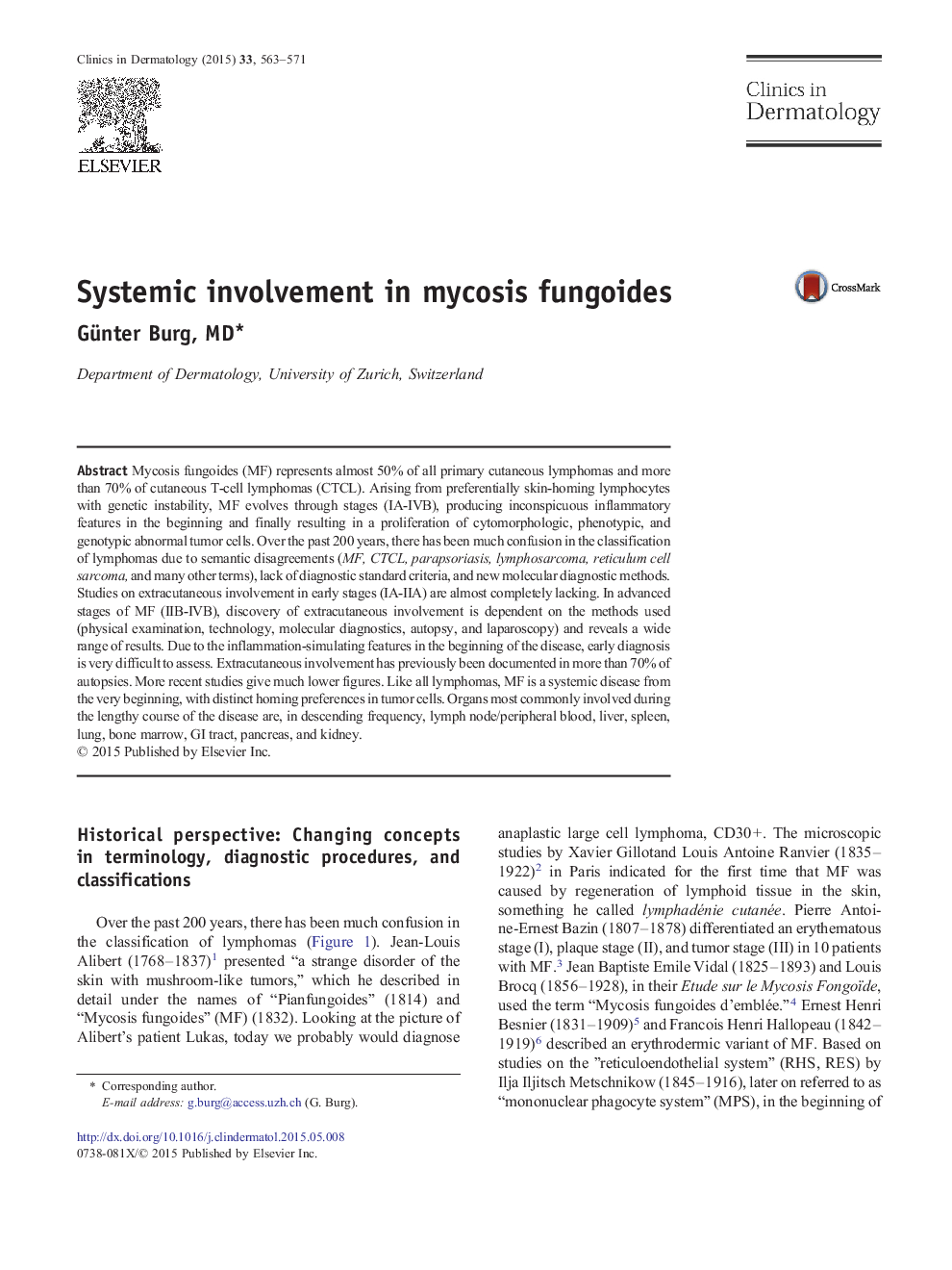| Article ID | Journal | Published Year | Pages | File Type |
|---|---|---|---|---|
| 3194020 | Clinics in Dermatology | 2015 | 9 Pages |
Mycosis fungoides (MF) represents almost 50% of all primary cutaneous lymphomas and more than 70% of cutaneous T-cell lymphomas (CTCL). Arising from preferentially skin-homing lymphocytes with genetic instability, MF evolves through stages (IA-IVB), producing inconspicuous inflammatory features in the beginning and finally resulting in a proliferation of cytomorphologic, phenotypic, and genotypic abnormal tumor cells. Over the past 200 years, there has been much confusion in the classification of lymphomas due to semantic disagreements (MF, CTCL, parapsoriasis, lymphosarcoma, reticulum cell sarcoma, and many other terms), lack of diagnostic standard criteria, and new molecular diagnostic methods. Studies on extracutaneous involvement in early stages (IA-IIA) are almost completely lacking. In advanced stages of MF (IIB-IVB), discovery of extracutaneous involvement is dependent on the methods used (physical examination, technology, molecular diagnostics, autopsy, and laparoscopy) and reveals a wide range of results. Due to the inflammation-simulating features in the beginning of the disease, early diagnosis is very difficult to assess. Extracutaneous involvement has previously been documented in more than 70% of autopsies. More recent studies give much lower figures. Like all lymphomas, MF is a systemic disease from the very beginning, with distinct homing preferences in tumor cells. Organs most commonly involved during the lengthy course of the disease are, in descending frequency, lymph node/peripheral blood, liver, spleen, lung, bone marrow, GI tract, pancreas, and kidney.
